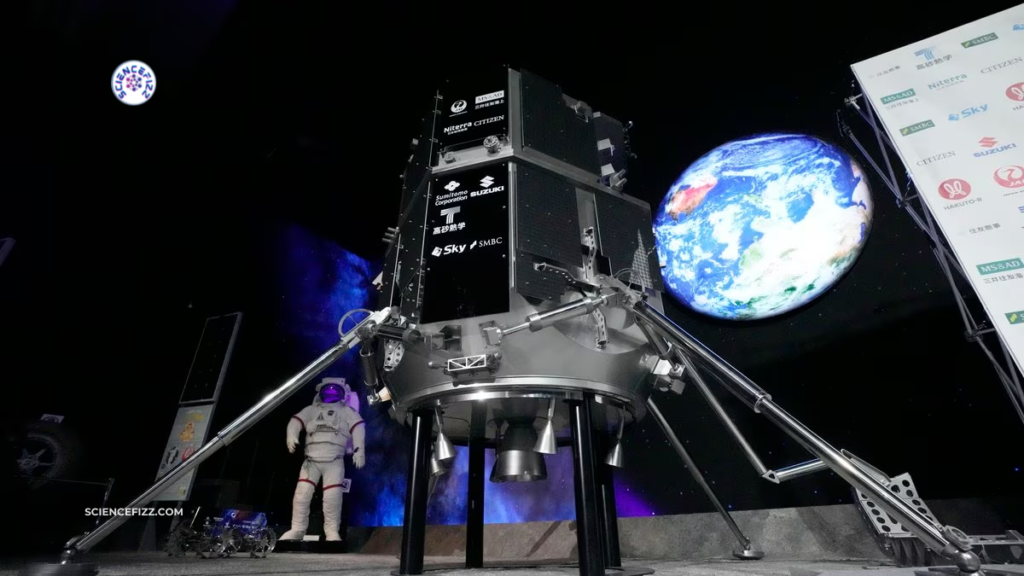iSpace Lunar Landing Mission: The Japanese spacecraft of iSpace was carrying a UAE Rover and was expected to land on the Moon’s surface. But the mission failed due to the crashing of the spacecraft.
The race of space exploration has been one of humanity’s most significant achievements in the last few years. Only three countries have successfully landed spacecraft on the Moon to date.
India’s Chardrayaan was also a successful project which had found water on the moon, without even landing on the Moon.
However many private companies are now also trying to get into the success list. One such company is Japan’s iSpace.
The iSpace also attempted to land a spacecraft on the Moon. The spacecraft was carrying a lunar rover called Rashid for the United Arab Emirates (UAE) and a toy-like robot.
Unfortunately, the mission failed as the spacecraft is assumed to have crashed on the Lunar surface.
iSpace Lunar Landing Mission
iSpace is a Tokyo-based private company established in 2010. The company’s mission is to generate income by offering a one-way taxi service to the Moon for other businesses and organizations.
To achieve this, iSpace is developing lunar landers and rovers that can carry payloads for customers to the Moon’s surface.
On April 26, 2023, iSpace attempted to land its Hakuto spacecraft on the Moon. The spacecraft carried a 22-pound lunar rover called Rashid for the UAE and a toy-like robot from Japan.
The mission aimed for the Atlas crater located in the northeastern section of the Moon’s near side, measuring over 50 miles (87 km) wide and 1 mile (2 km) deep.
Read Also: Gaganyaan Mission: ISRO To Send Humans Into Space.
The Failed Attempt of Lunar Landing
The spacecraft attempted to land on the Moon, after a 4.5-month mission. Unfortunately, communication was lost with the spacecraft six hours before iSpace confirmed that the lander had likely crashed on the Moon’s surface.
The company stated a “high probability” of impact and that they would prepare for a second attempt.
iSpace’s attempt to land a spacecraft on the Moon was unsuccessful, but the team got very close.
To date, only three countries – Russia, the US, and China could land on the Moon’s surface.
If the project would be successful, iSpace would have been the first private company to win the title of lunar landing.
The failed mission is a setback for iSpace, but the company is not giving up. According to its announcement, iSpace will continue to make the most of the data acquired during the operation.
The company is aiming to dramatically improve the technological maturity of Mission 2 in 2024 and Mission 3 in 2025.
Conclusion: iSpace Lunar Landing Mission
The attempted lunar landing by iSpace was a significant milestone in the company’s mission to offer lunar transportation services to other businesses and organizations.
However, the mission failed but iSpace is not giving up and is preparing for a second attempt next year.
As space exploration continues to be a trendy thing, private companies like iSpace may play an important role in shaping the future of space exploration.
FAQs
-
What is iSpace?
iSpace is a Tokyo-based private company established in 2010. The company’s mission is to generate income by offering a one-way taxi service to the Moon for other businesses and organizations.
-
What was iSpace’s recent mission?
iSpace attempted to land its Hakuto spacecraft on the Moon. The spacecraft carried a 22-pound lunar rover called Rashid for the UAE and a toy-like robot from Japan.
-
Did iSpace’s mission succeed?
No, the mission could not succeed as the spacecraft crashed on the Moon’s surface.
-
What are the future plans of iSpace after failure?
Despite the setback, iSpace is not giving up and is preparing for a second attempt. The company is also aiming to dramatically improve.
